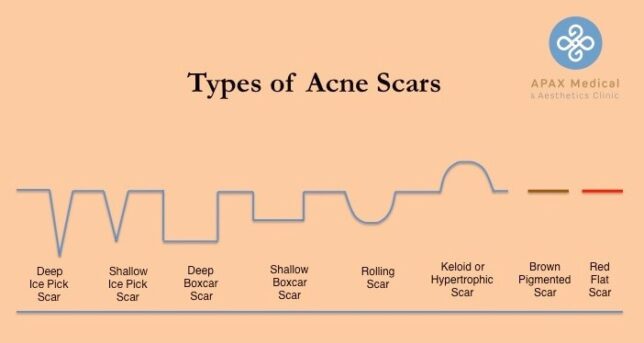What is a scar?
A Scar is a residual and, most often times permanent, lesion or mark arising from an imbalance between the destruction of collagen and the deposition of collagen which occurs as result of injury and wound healing
Types of Scars
Immature Scars:
These scars are usually itchy, may be painful, may be red in color with visible capillaries and poor stretch-ability and are seen in early phases of wound
Mature Scars:
These scars are usually asymptomatic (without symptoms), usually more light or skin colored, usually soft and pliable that lack extensivevascularity and most symptoms.
Morphological classification of scars:
aka classification based on appearance on the skin
Type 1 - Stretched Scars:
Stretched scars are wide, usually pale, usually asymptomatic, flat scars that develop when surgical scars become stretched or widened over time.
Type 2 - Atrophic Scars:
Atrophic scars most commonly arise as a sequelae of acne or from a traumatic injury. These are small, indented, flat or depressed and may further be subdivided into ice pick (60%–70% of all), boxcar (20%–30% of all), and rolling scars (15%–25% of all).
Type 3 - Scar contractures:
Scar contractures form as immature scars contract or shorten over joints or skin creases. Scar contractures may cause functional deformity and are commonly seen post burn injuries.
Type 4 - Raised skin scars:
Raised skin scars can be divided into hypertrophic scars and keloids:
Hypertrophic scars
Hypertrophic scars, commonly seen on the limbs or trunk, remain confined to the boundary of the original lesion and are usually itchy, red, and/or painful
Keloids
Keloids are raised scars that extend beyond the margins of the original lesion. Keloids may be extremely itchy and painful and are most often seen on ear lobes and pre-sternal region, but can occur anywhere.



